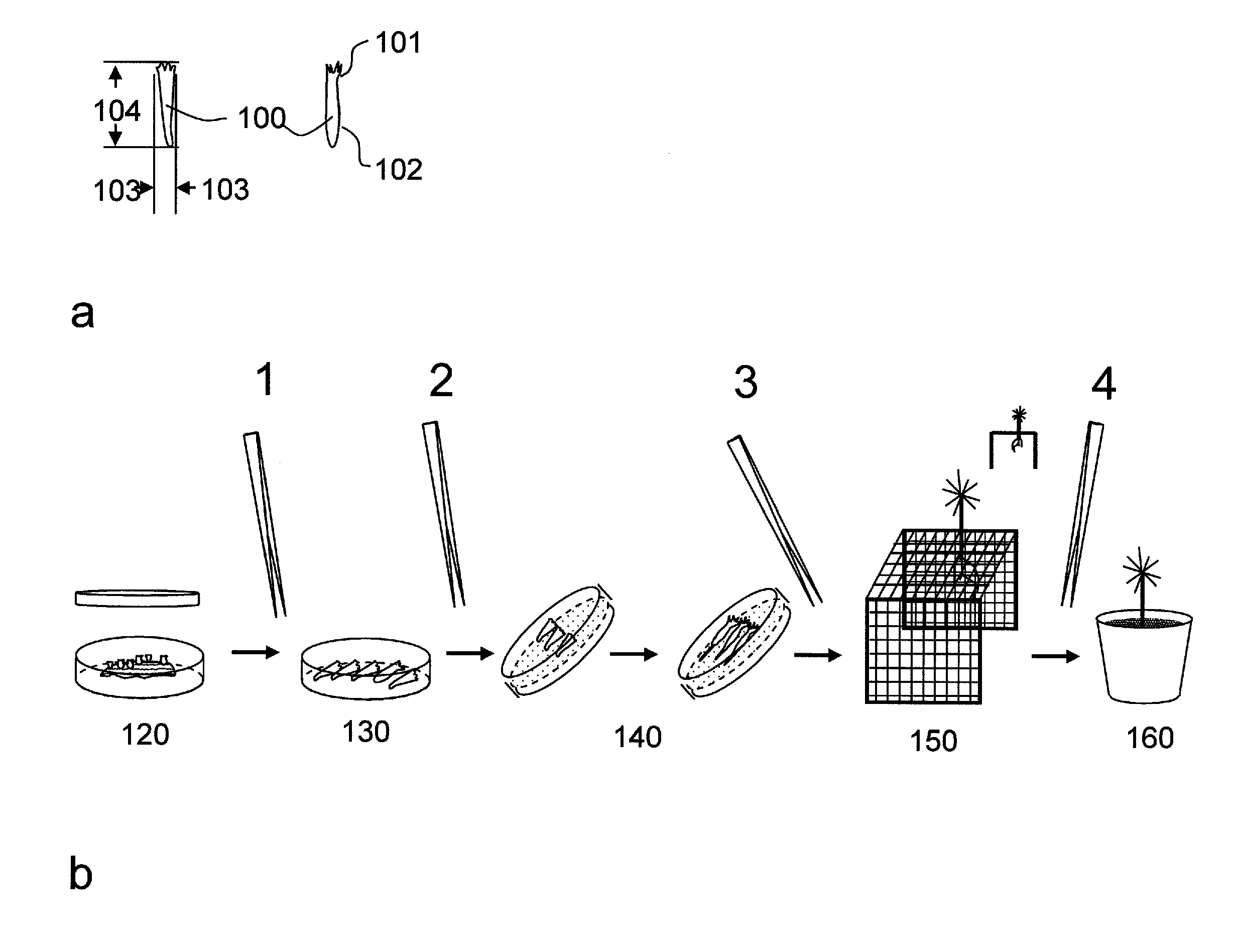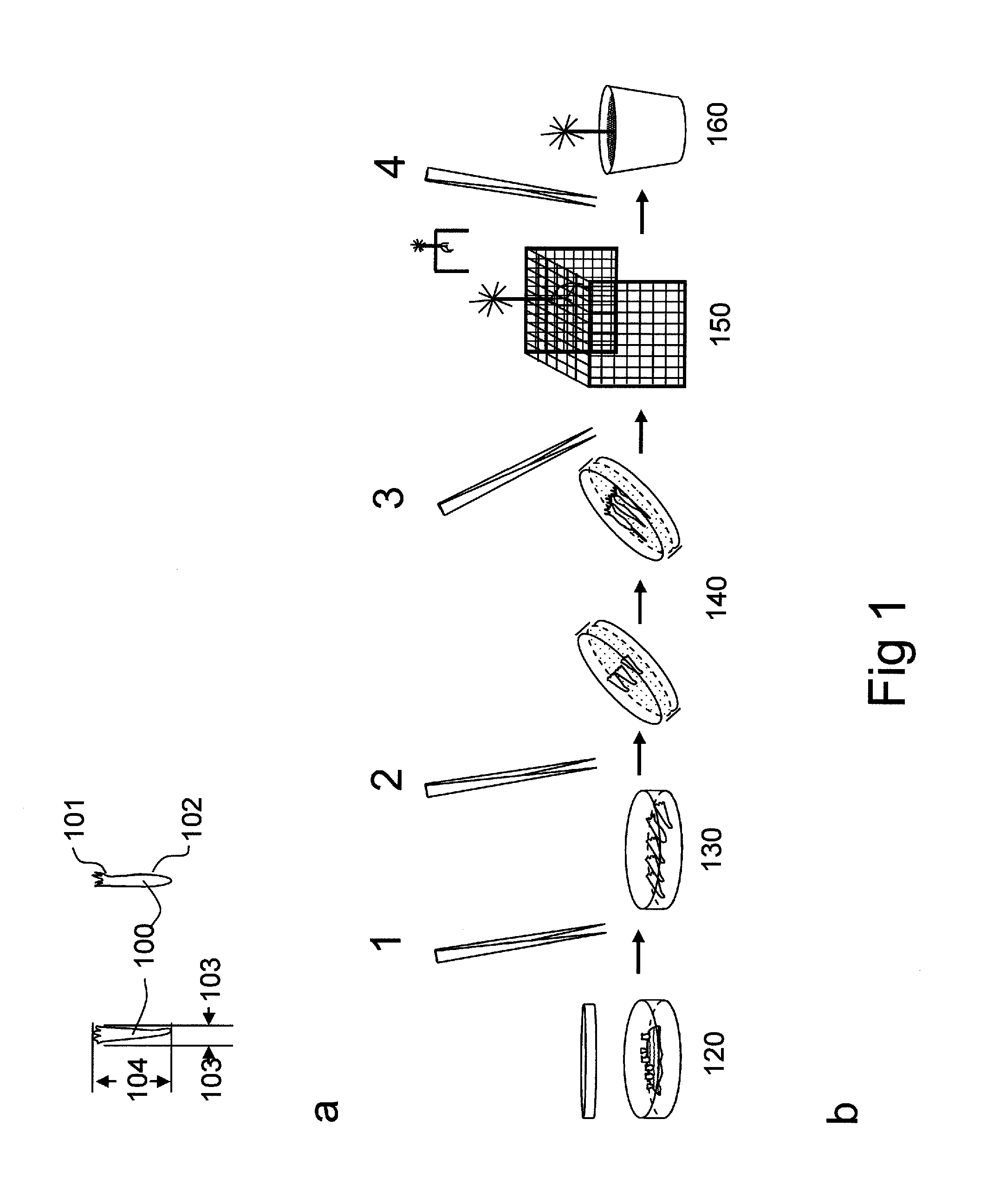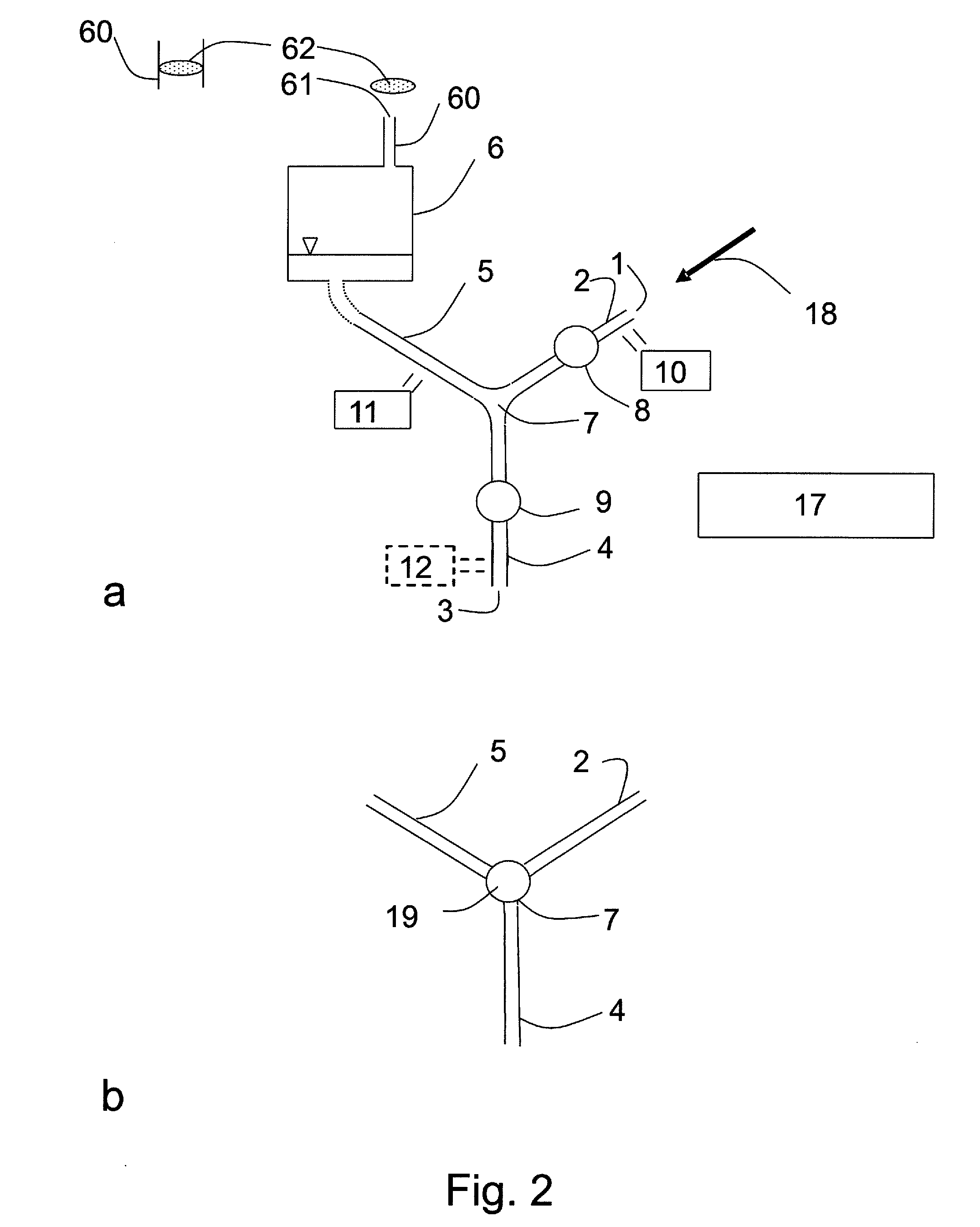Fluidics-based orientation and sorting device for plant embryos
a plant embryo and fluidics technology, applied in the direction of ratio control, plant tissue culture, instruments, etc., can solve the problems of increased manpower and labor needed to collect embryos, decreased conversion rate, cost and risk of contamination,
- Summary
- Abstract
- Description
- Claims
- Application Information
AI Technical Summary
Benefits of technology
Problems solved by technology
Method used
Image
Examples
example 1
Construction of an Orientation and Sorting Device
[0154]An embryo reservoir for Norwegian spruce embryo was set up from which the embryos were fed through a flow loop into the orientation and sorting device.
[0155]The flow loop was constructed from a mixture of glass and Tygon tubing. A continuously variable peristaltic pump drew water and embryos from a reservoir through the separation section and into a pressurized chamber filled with air and water. This pressurized chamber served to dampen the pulsations associated with the peristaltic pump. This is a standard method to dampen the pulsation from a pump.
[0156]After leaving this chamber the water and embryos passed into and through the imaging section which was constructed of a 30 cm length of square borosilicate glass tubing with an inside cross-section nominally 3 mm across. On leaving the imaging section the flow entered a round Tygon tubing with 3 mm internal diameter and moved past a solenoid pinch valve (8), into the reorientat...
PUM
 Login to View More
Login to View More Abstract
Description
Claims
Application Information
 Login to View More
Login to View More - R&D
- Intellectual Property
- Life Sciences
- Materials
- Tech Scout
- Unparalleled Data Quality
- Higher Quality Content
- 60% Fewer Hallucinations
Browse by: Latest US Patents, China's latest patents, Technical Efficacy Thesaurus, Application Domain, Technology Topic, Popular Technical Reports.
© 2025 PatSnap. All rights reserved.Legal|Privacy policy|Modern Slavery Act Transparency Statement|Sitemap|About US| Contact US: help@patsnap.com



